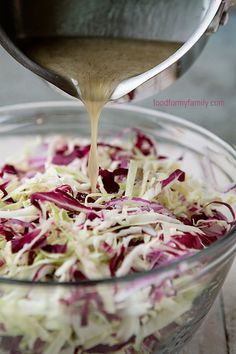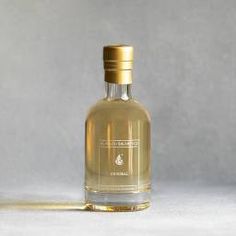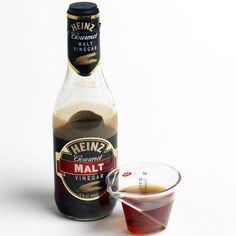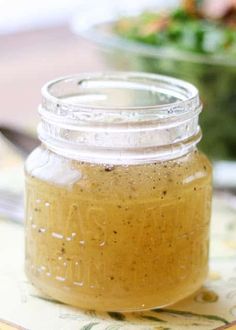Substitutes for White Vinegar

Vinegar is a common component in most households. Vinegar may be used in various ways, including cooking, baking, and salad dressings. Vinegar is a common component in many recipes.
What’s fascinating about vinegar is that there are several varieties, each of which serves multiple functions. What is more crucial is that it has an almost infinite shelf life.
Vinegar is self-preserving due to its acidic nature. That is, you do not have to keep it in the refrigerator.
White vinegar is one of the numerous varieties of vinegar. It’s supposed to be a type of magical substance. White vinegar is used for cleaning as well as cooking. It’s inexpensive and easy to find in your local market. There are two forms of vinegar: white vinegar and distilled white vinegar.
Both varieties of white vinegar, detailed and white vinegar, are pretty acidic and are used in cooking. But what if you don’t have any white vinegar on hand and you desperately need it? Can other types of vinegar be of assistance?
Can I use white vinegar instead? You certainly can. There’s no need to be concerned; read the article to discover which varieties of vinegar are an acceptable alternative for your dinner.
Champagne vinegar, white wine vinegar, malt vinegar, rice vinegar, apple cider vinegar, and white balsamic vinegar are possibilities. First, let’s talk about white vinegar and the distinction between distilled and white vinegar.
White Vinegar Substitutes
Don’t worry if you don’t have white vinegar on hand and the recipe calls for it; here’s a list of the finest substitutions to help you preserve your supper. When using vinegar, keep in mind that each variety has a varying amount of acidity, so don’t overdo it.
1 . Champagne vinegar

Because champagne is a white wine, fermented champagne adds lightness and an intense acidic taste to a meal.
It tastes the most like white vinegar and has a more delicate flavor than other vinegar. Remember that it will not be as acidic as white vinegar, but it will taste adequate.
It may be used for pickling, mayonnaise, and some recipes call for deglazing pans, comparable to balsamic vinegar.
2. White wine vinegar
This vinegar is manufactured from fermented white wine and has a more delicate flavor than red wine vinegar. Because of the grapes used to manufacture it, this vinegar has a subtle fruit flavor that should not interfere with your recipes.
This white wine vinegar may make sauces, salad dressings, and marinades. Because the faint hue does not affect anything, you may also use it for pickles. It’s also worth noting that it’s easy to find and inexpensive.
3. Malt vinegar

This vinegar is manufactured from ale and is grain-based. The mild version will not overpower the tastes of meals that call for white vinegar.
The light-colored vinegar and the dark malt vinegar, caramel added for color, are the most commonly used for cooking.
This vinegar is commonly found in condiments or baking aisles. It is a culinary staple in both British and Canadian cuisines.
4. Rice vinegar
This less acidic vinegar, often used for marines or sushi rice, can be used in white vinegar. If you need to reduce the acidity, it might be helpful for folks who find white vinegar too harsh.
When substituting, make sure you choose the unseasoned kind, as there is a seasoned alternative.
5. Apple cider vinegar
This vinegar is well-known for its health benefits. Made from fermented apple juice, the apples are smashed, and the liquid is squeezed out. It passes through the fermentation process, which converts the sugar into alcohol. It tastes acidic and fruity.
This vinegar may be used in salad dressings, marinades, and food preservatives. It may also be used to provide a fruity flavor to dishes such as juice mixes, teas, and other beverages.
6. White balsamic vinegar

The white balsamic vinegar is made from Trebbiano grapes farmed in the Modena area of Italy, combined with concentrated, uncooked grape must.
This vinegar has a pleasantly sweet flavor with a hint of acidity and lacks the flavor of classic Balsamic vinegar.
This vinegar works nicely in salad dressings and other sauces when red vinegar isn’t allowed.
Vinegar: White vs. Distilled
White vinegar is essentially distilled grain alcohol with a sour and abrasive taste. It is usually 4-7 percent acetic acid and 93-96 percent water. However, vinegar with a greater acetic acid content is typically used for cleaning.
This sort of vinegar is well-known for its use as a household cleaner. However, it may provide a vibrant taste to salads, sauces, pickles, pastries, and other dishes when used in cooking.
White vinegar can also be distilled. It is, however, also utilized in cooking. The distinction is in the purification. For instance, distilled white vinegar is purer than regular white vinegar.
White vinegar, often known as spirit vinegar, is typically made from sugar cane.
It permits sugar cane to be extracted and acid fermented. The chemicals in the liquid alter and become more acidic as it oxidizes.
Related Issues
Can I use lemon juice instead of white vinegar in baking?
Yes, it works the same way, and you won’t notice any difference. It will impart sourness and, most importantly, it is chemical-free. It is better to include it towards the end. You should also know that lemon juice does not need to be diluted when used as a substitute.
Can I use distilled vinegar for white vinegar?
Of course, they may be used for cooking, cleaning, food preservation, and even medicinal applications. The sole difference is that the white vinegar is stronger than the distilled vinegar. Make sure not to overdo it.
What is the purpose of white vinegar in cooking?
When white vinegar is used in marinades, it aids in the tenderization of the meat. It works well in sauces with high sugar content or in dressings with solid herbs and competing components.











